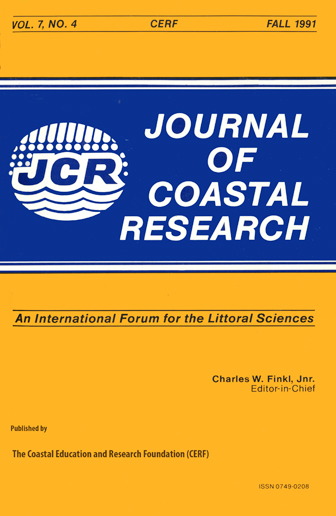Evaluation of Sediment Dynamics and the Mobility of Heavy Minerals on a Linear Sand Shoal
Keywords:
Sand transport, sediment resuspension, selective entrainmentAbstract
Two instrumented tripoda were deployed in summer and fall, 1987, at Smith Island Shoal a coast-parallel sand ridge near the 10-meter depth contour just north of the Chesapeake Bay entrance on the Virginia inner shelf. Previous studies of the shoal have noted a high abundance of heavy minerals (up to 16 percent by weight) contained within the surficial sediments (fine to very-fine sands) on its flanks, as compared to much lower concentrations elsewhere. Measurements of near-bottom current, wave-orbital velocity, wave height and optically-sensed suspended sediment concentration within a meter of the seabed show that the flank areas of the shoal frequently experience wave-induced, bottom orbital velocities well in excess of the critical level needed to produce grain motion. During periods of moderate wave activity (Hmo = 0.81-1.0 m, T = 8.5-9.5 s) bottom orbital velocities were "groupy" in their distribution, reaching maximum values as high as 60 cm/s. Pronounced resuspension of bed material occurred within a meter of the bottom and was strongly modulated at wave-group periods of 100 to 200 seconds. Samples of suspended material show approximately the same mineral composition as that of the local bed material but with some indication of height-dependent mineral sorting. Wave induced resuspension of heavy minerals is thus indicated during all but fair weather conditions, with near-bottom currents generally slow and erratic. This suggests that the potential for selective mineral sorting is restricted to grains moving in suspension.


